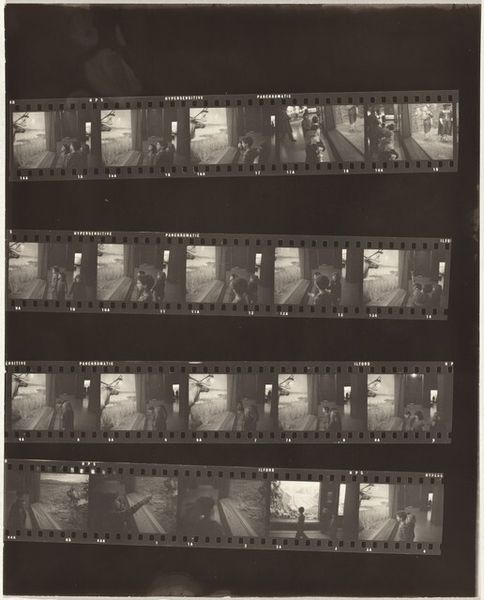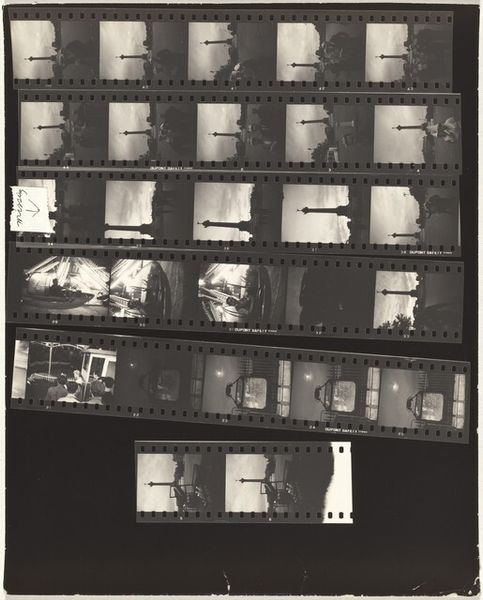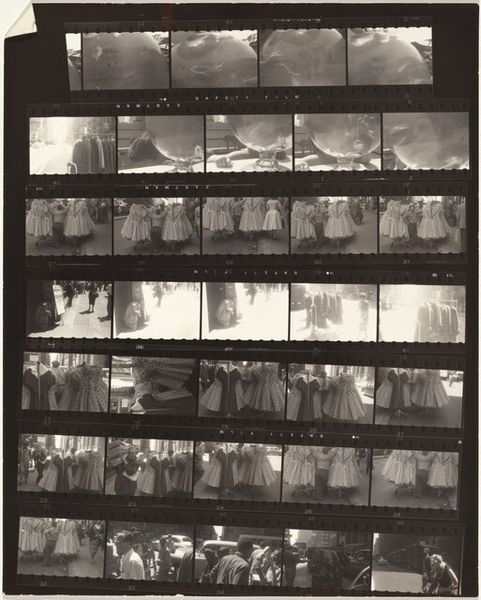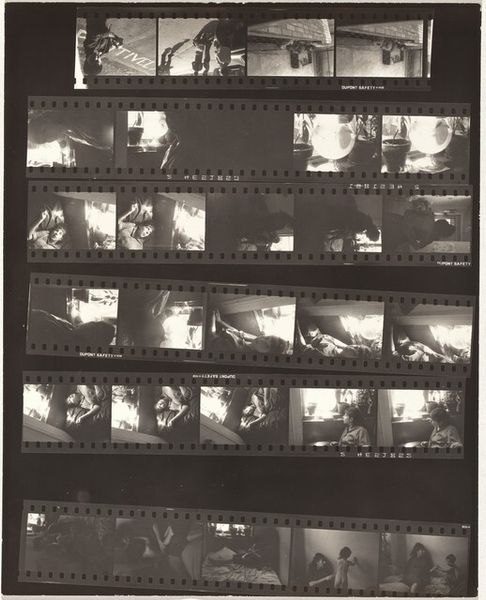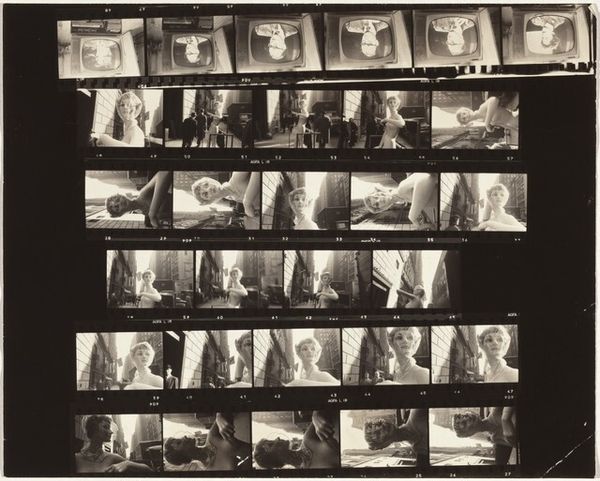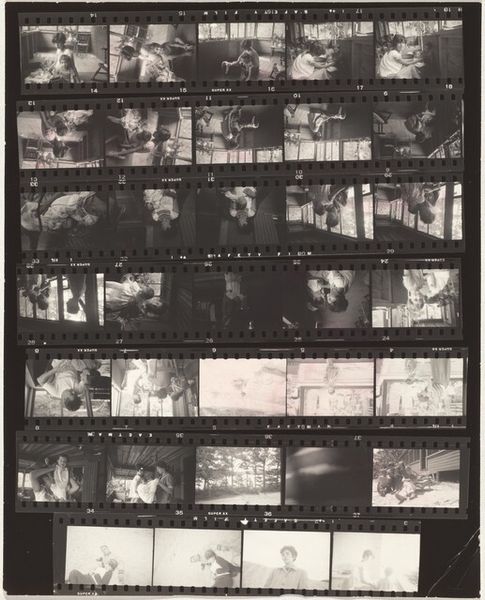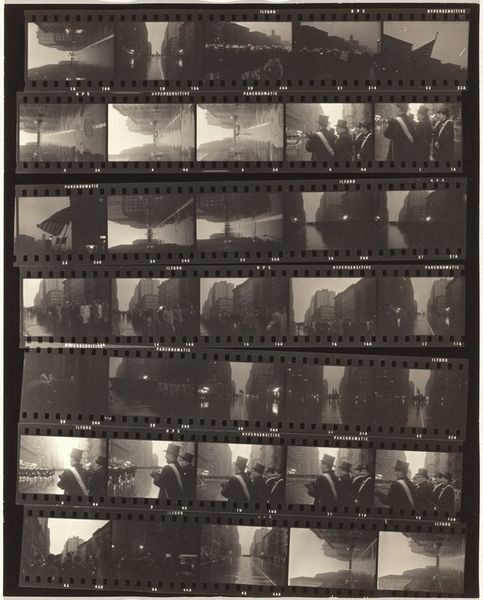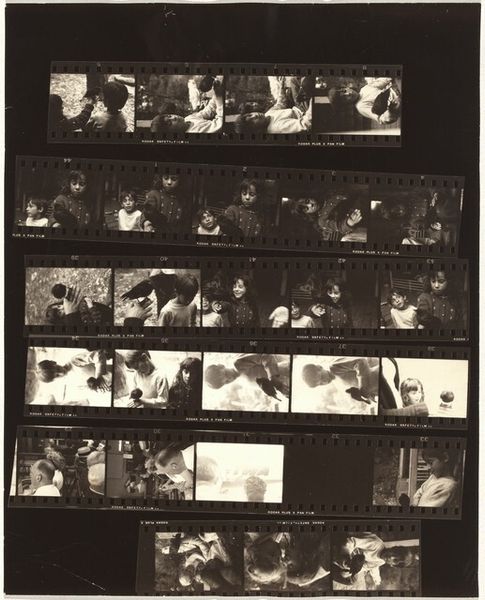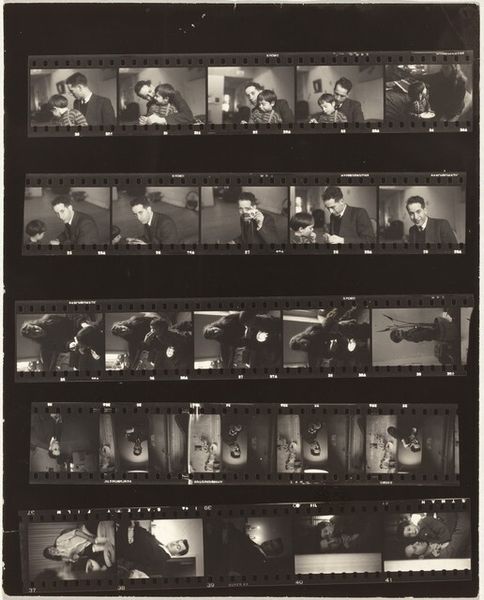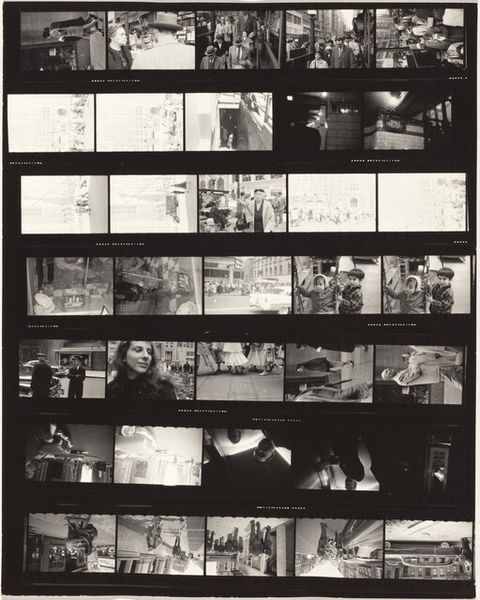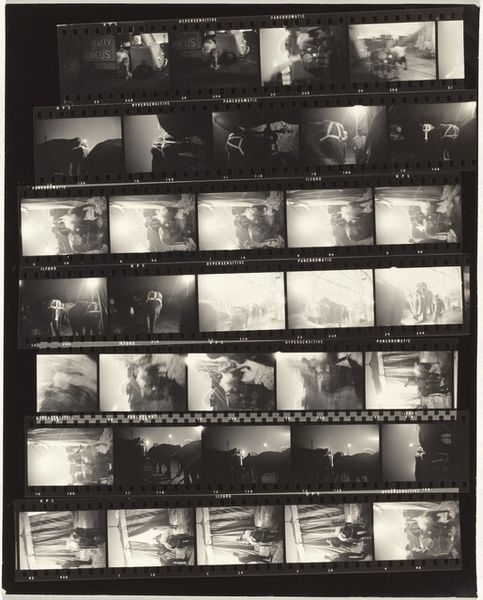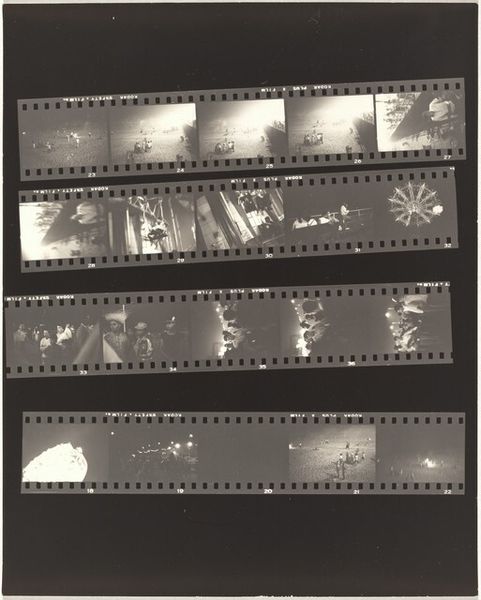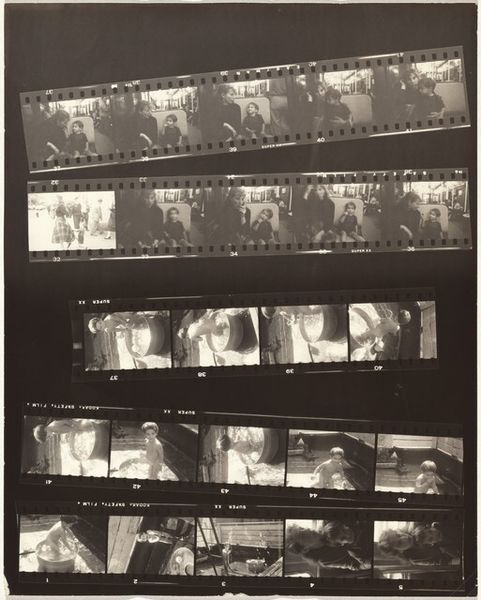
contact-print, photography
#
portrait
#
contact-print
#
photography
Dimensions: overall: 20.2 x 25.3 cm (7 15/16 x 9 15/16 in.)
Copyright: National Gallery of Art: CC0 1.0
Curator: Looking at this contact print by Robert Frank, made around 1959 or 1960, of a young girl, one gets the immediate feeling of… vulnerability? Is it just me? Editor: Absolutely. And a specific kind of mid-century vulnerability. It’s interesting seeing the unguarded nature that children have when in front of cameras; that, coupled with Frank's rawness, gives a stark portrait of American youth. Curator: Yes, this isn't posed studio portraiture, is it? It feels like a fleeting glimpse of her interior world, across those frames. There’s a certain melancholy in her eyes, even in the few where she’s smiling. And how many shots are there? Four strips with many photos of this little girl. You almost wonder, what did she think of this photographic intrusion? Editor: It makes me think about how the camera becomes both a tool for documenting and a potential force of disruption in the subject’s life. And Robert Frank always does have that edge… there is no one more critical about America and its ideals, after all. Curator: Right! His style can seem very direct and unrehearsed but look at how intentional the arrangement of these strips are. Notice the contrast. Is it simply meant as documentary, or did the artist mean something to emerge about the subject, about family dynamics, or perhaps American life overall? It looks deliberate in that way. Editor: You bring up such an important question about intention. Was this a portrait meant to convey childhood innocence, or is there a darker subtext lurking beneath the surface? I also can't help but consider that Frank created work during the height of second-wave feminism, so the themes of vulnerability are all that much stronger in how the photo affects the viewers. Curator: You are right. And those rows almost give her a timeline that doesn’t feel very chronologically structured at all, like how memory truly is. There is that element of storytelling here. This print truly offers us so much more than we can readily see. I am changed having discussed this work together. Editor: It does. In rethinking it now, and knowing how art changes through generations, Robert Frank provides us the language to engage with complex sociopolitical contexts, such as childhood, through very personal mediums.
Comments
No comments
Be the first to comment and join the conversation on the ultimate creative platform.
